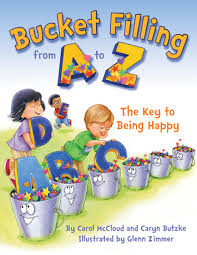Teacher: Let’s stop talking about testing
Posted: 6:00 p.m. Monday, April 28, 2014
BY SARAH DILLE - SPECIAL TO THE AMERICAN-STATESMAN
http://www.mystatesman.com/news/news/opinion/teacher-lets-stop-talking-about-testing/nfhrz/
I heard a story on the radio on my way to work recently in which someone insisted: “What isn’t tested isn’t taught.”
If that statement were true, it would perhaps be the most depressing statement we could make about education today.
I’m lucky to know how false that statement is, and we do a disservice to the image of public education to insist that it is true. It certainly isn’t true in my classroom or the ones around me.
So I want the conversation to change.
I don’t want to hear any more about test preparation.
I don’t want to hear any more about Saturday boot camps or test preparation packets or anchor charts featuring the latest test-taking strategies.
I don’t want to hear people judging one school over another based simply on test scores.
I want to start talking about what happens beyond the test. I want Austin to know that our schools are not testing factories, but they are places of growth and learning. There are so many ways our schools are serving our students well.
I want us to start talking about the students who sit in a world geography classroom and learn about Africa and Afghanistan and realize that “history is not just learning about dead guys and gory battles; it is learning how men and women influenced different ideas and inspired change in the world,” as one former student recently wrote. She sat in world geography and had her eyes opened. She now plans to help make more change in the world.
And guess what? There was no standardized test for world geography.
I want us to start talking about real writing. About students who worked together as a class to publish a satirical newspaper to distribute to students and teachers on April Fool’s Day. About students who enter their poetry in competitions and submit to literary magazines. About students who write reports on issues that affect them — funding higher education, raising the minimum wage and caring for the environment — and send them off to their state senators so they start to see that their voice indeed matters.
Because isn’t writing for a real audience much more important than writing 26 lines for a “grader”?
I want us to start looking at all that happens in a school beyond the core subjects, to the places where students truly learn to work together, to lead, to lend a hand, to question. Let’s talk about the district-winning softball team. The dance team that spends hours before and after school perfecting their show. The one-act play participants who make it to regionals, the band members who march in the heat because they love music and their school, the National Honor Society students who volunteer their time in the community, the PALS students who take time to mentor elementary school children.
Because doesn’t a child’s emotional education matter at least as much as their academic one?
I want us to talk about students who have internships with the city as part of their government class and who write and edit the school newspaper as budding journalists. I want us to start talking about the students who constructed handmade cutting boards for the teachers for Christmas in their construction trades class, the students who do hair before school as they earn their cosmetology license, the students who fix cars in the auto shop or cook the faculty lunch in the culinary room.
As my principal said in a meeting last week, “Even though we are in testing season, I don’t want that to define who we are.”
Our students will go off to live in a world that doesn’t present problems as multiple choice questions, and there are so many ways that schools and teachers make sure they are ready for it. Teachers know that a student’s success is measured not by one test on one day, but by growth over the year.
Good teachers are not preparing the students for a test. They are preparing them for life.
I wish that we could talk about that on the radio and in the newspapers. I wish we could present stories of students challenging themselves to learn, of teachers pushing students to think creatively, of administrators thinking outside the box (or the bubble sheets) to make a truly well-rounded educational experience possible for all kids.
We talk too much about the test.
Let’s change that.
Dille teaches English at Crockett High School and was honored as Teacher of the Year 2013 by the Austin school district.














